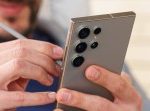- The best way to play games on an iPhone, iPad, or Apple TV is with a controller.
- The SteelSeries Nimbus+ is the best iOS controller because of its unparalleled versatility, familiar layout, and a handful of features made specifically for iOS.
- Sign up for Insider Reviews’ weekly newsletter for more buying advice and great deals.
There’s no denying the popularity of iOS games. Apple gave them their own section of the App Store in 2017 and introduced the subscription service in 2019 because its customers play so many games.
Experts said in July that the mobile gaming market would bring in $100 billion in revenues throughout 2020 – more than three times as much as titles released for the Nintendo Switch, PlayStation 4, and Xbox One.
Many of those games can be played with nothing but a touchscreen. Some titles can benefit from more precise controls, however, and the lack of an official Apple controller means eager iOS gamers have to use a third-party gamepad. (A situation that Apple’s been rumored to resolve for years but has never delivered on.)
With so many controller options out there, it can be hard to figure out which iOS gamepad is best for your needs. The best controller for someone who owns an Xbox One and mostly plays on their Apple TV, for example, won’t be the same as the best controller for someone who doesn’t own a console and only plays games on their iPhone while they commute.
After testing several models across different iOS devices, we’ve selected the best controllers for playing games on the iPhone, iPad, or Apple TV. Our picks are divided into categories geared towards specific buyers based on Apple’s expanded support for console gamepads, compatibility with different kinds of devices, and potential use cases.
Here are our top picks for the best iOS Controller:
- Best overall: SteelSeries Nimbus+
- Best for PlayStation owners: DualShock 4
- Best for Xbox gamers: Xbox Wireless Controller
- Best for Nintendo Switch fans: Razer Kishi
SteelSeries Box
The SteelSeries Nimbus+ is the most versatile yet familiar controller you can find for gaming across the entire Apple ecosystem.
Pros: Built-in stand that fits most iPhones; supports all modern iPhone, iPad, Apple TV, and Mac models; familiar layout complemented by iOS navigation buttons
Cons: Attaching the stand can seem a bit sketchy, prominent battery indicator detracts from the design
The SteelSeries Nimbus+ is the best iOS controller thanks to its incredible versatility. It can easily pair with iPhone, iPad, Apple TV, and Mac devices via Bluetooth. It can be used standalone, like a traditional controller, or it can be used with an iPhone mount that makes it seem more like a handheld console than a gamepad. And, it can even be customized using the SteelSeries Engine software.
All of those features help the Nimbus+ slot easily into the Apple ecosystem. So does the Lightning port that makes it easy for most iPhone and iPad owners to keep the battery charged. With that said, iPad Pro owners who rely on a USB-C cable for charging will have to dig up one of their old Lightning cables. The battery lasts up to 50 hours on a single charge, which should be more than enough for mobile use or gaming sessions around the house on the couch.
The Nimbus+ was clearly inspired by other controllers — it features the same layout as Sony’s DualShock 4 with a shape that best resembles Microsoft’s Xbox Wireless Controller. There are four face buttons, two shoulder buttons, a directional pad, two clickable analog sticks, and a trio of navigation buttons meant specifically for iOS devices. The controller should feel familiar to any experienced gamer.
This isn’t to say the Nimbus+ is perfect. Attaching the phone mount feels perilous, the prominent battery indicator is an eyesore, and the face buttons feel oddly slick compared to those found on other controllers. Yet, none of its competition manages to best the Nimbus+ when it comes to offering a great experience on every Apple device you own. That versatility more than makes up for a few design quibbles.
The best iOS controller for PlayStation owners
George Dolgikh / Shutterstock
The DualShock 4 is included with the PlayStation 4, it features a reliable design for gaming, and it’s easy to swap between Apple devices and your console.
Pros: Familiar layout; PS4 owners won’t have to purchase another controller; easy to switch between devices
Cons: Not everyone will find it comfortable to use; battery life can be lacking, especially late into the controller’s life
Sony introduced the first DualShock controller as an optional PlayStation accessory in 1997. Until the release of the PlayStation 5, which comes with the new DualSense controller, every other PlayStation console debuted with a next-generation DualShock controller that built upon the original design. The gamepad is familiar to millions of gamers — and PS4 owners can easily use the DualShock 4 with all of their Apple devices.
Apple officially added support for the DualShock 4 to iOS and tvOS in 2019 to coincide with the launch of Apple Arcade. Pairing the controller is as easy as simultaneously pressing and holding the Share and PlayStation buttons until the light bar flashes. The controller can then be selected in the iPhone, iPad, or Apple TV’s Bluetooth settings; the light bar will glow a solid color when it’s successfully paired.
Using the DualShock 4 is otherwise similar to using it with a PS4. The controller features the same basic layout as the original DualShock released in 1997: two clickable analog sticks, a directional pad, four face buttons, two shoulder buttons, and three navigation buttons are all here. Anyone who’s played on a PlayStation console in the last 23 years will have a familiar experience with the DualShock 4.
Unfortunately, support for all of the DualShock 4’s features varies by game. Some developers choose not to support “extra” features, such as the touch bar, light bar, and rumble-based feedback. Apple has made it easy for devs to customize on-screen control prompts based on the connected controller, which is nice, but they aren’t always perfect. And, the DualShock 4’s battery life often leaves a lot to be desired.
The best iOS controller for Xbox gamers
Business Insider
The Xbox Wireless Controller is a great all-around gamepad for iOS devices, and it features a shape many people with larger hands will find comfortable.
Pros: Easy to switch between devices, Xbox One owners won’t have to buy a new controller, comfortable shape lends itself well to longer gaming sessions
Cons: Might be too large for some hands, requires batteries
Apple didn’t just throw PlayStation owners a bone in 2019; it also officially added support for the Xbox One controller. It’s the same basic concept — make it easy for iPhone, iPad, and Apple TV owners to use a gaming controller they might already own, but this time, applied to the gamepad Microsoft has shipped with every console since 2013.
Most people probably won’t have to choose between an Xbox controller or a DualShock 4 for iOS, as it’s more likely you’ll own one or the other, and both are great performers. For those who do have an option, however, there are a few differences to note.
The most obvious is the shape: Microsoft opted for an asymmetric layout, slightly larger body, and more trigger-like shoulder buttons with its controller. It also chose to use AA batteries rather than a rechargeable battery, which can give the Xbox One controller a longer battery life at the expense of convenience.
I’ve been a PlayStation owner for most of my life, and I’m used to the DualShock lineup, but I’ll admit the Xbox One controller is a lot more comfortable when playing for extended periods. People with larger hands will probably prefer Microsoft’s offering; those with hands on the smaller side might be better off with Sony’s. But, again, the point is to use the controller you already own with as many devices as possible.
Pairing an Xbox One controller with an iOS or tvOS device is as easy as pressing the Xbox button, holding down the Pair button for a few seconds if it’s already connected to a console, and then selecting the controller from the Bluetooth menu of the device you want to play on. I haven’t encountered any issues switching between my iPhone, iPad, or Apple TV while I was evaluating the Xbox One controller for this guide.
It should be noted, however, that the brand-new 2020 version of the Xbox One controller released in conjunction with the new Xbox Series S and X does not yet have iOS support. It’s expected to be added, but only the older model linked to in this guide currently works with iOS.
The best iOS controller for Nintendo Switch fans
Razer
The Razer Kishi is an easy-to-transport controller that turns a connected iPhone into a makeshift Nintendo Switch.
Pros: Great for travel, offers a similar experience to the Nintendo Switch, fits most iPhone models
Cons: Can be hard to set up the first time or reset between uses, can’t be used across the entire Apple ecosystem
Razer is mostly known for its PC gaming peripherals, but at CES 2020, the company announced a new Kishi controller for smartphones. (I’ve used the version made for iOS devices, but there’s also an Android version.) Unlike the other controllers on this list, which emulate or simply are traditional gamepads, the Razer Kishi effectively turns the connected iOS mobile device into something like a Nintendo Switch.
Here’s how it works. iPhone owners can pull the Kishi apart, plug the right controller into their Lightning port, and then align their phone with the slot on the left controller. The peripheral then holds the connected iPhone securely in place while also offering the same inputs — two analog sticks, four face buttons, two shoulder buttons, etc. — as more traditional gamepads. It’s basically a pair of JoyCons for a phone.
This setup lends itself well to gaming on the go and, unlike the SteelSeries Nimbus+, setting up the Razer Kishi doesn’t feel precarious. It also takes up less space than the Nimbus+, but it’s less versatile as a result. Nobody’s going to be using the Kishi with anything but an iPhone, so people who own multiple Apple devices will have to find something else if they plan on playing games across the whole ecosystem.
Still, the Razer Kishi is an excellent option for iPhone gamers. The controller is responsive, sturdy, and easier to carry around than most of its competitors. It also features passthrough charging that should make it easy to keep the connected iPhone charged during prolonged gaming sessions.
Our testing methodology
Amazon
To determine the best iOS controller, I tested several models using a series of games and media applications. All of our controller picks were used to play a mix of iOS-native games, titles streamed from my PlayStation 4 Pro using the Remote Play app, and games streamed from my PC using the Steam Link app.
The goal was to evaluate each controller’s responsiveness in a variety of scenarios, to confirm that each gamepad could work with the iOS interface, and to gauge each controller’s performance across genres.
Controllers were evaluated based on how comfortable they felt while playing, how swiftly their batteries died, and how easy they were to set up. Some of these metrics, like comfort, are admittedly subjective. However, I’ve reviewed many peripherals and strive to make the line between objectivity and subjectivity clear where applicable. Still, your mileage may vary based on some factors.
Tested hardware includes a new iPhone SE, second-generation iPad Pro, Apple TV 4K, and the 2018 Mac mini. The SteelSeries Nimbus+, DualShock 4, and Xbox Wireless Controller work with all of the devices; the Razer Kishi’s dependence on a physical Lightning connection limits it to the iPhone.
What we’re looking forward to testing
Sony
Though our current picks represent the best controllers we’ve been able to test so far, there are always additional models we’d like to get our hands on. With the release of the PlayStation 5 as well as the Xbox Series X|S, there should be several new options soon.
I look forward to testing these new controllers when iOS support is added. I’m also still waiting to get my hands on a few existing controllers from Rotor Riot and Backbone for consideration in our guide.
- Sony DualSense ($70): Sony introduced the DualSense controller alongside the PlayStation 5 in November 2020, breaking the DualShock line’s 23-year-long reign. Apple devices don’t support this new gamepad yet but it’s possible support will be added in the future. It will be interesting to see if developers take advantage of its unique features, like haptic feedback and adaptive triggers.
- New Microsoft Xbox Wireless Controller ($60): Microsoft also released a new controller alongside the Xbox Series X|S consoles in November. The new features a slightly modified design with a Share button in the middle of the gamepad. Apple and Microsoft have said they’re going to make the controller compatible with iOS.
- ($50): Rotor Riot’s controller is similar to the Nimbus+ in that it features a built-in stand that can hold an iPhone steady while providing a console-quality gaming experience. It features a physical connection to the paired iPhone, too, which should lead to greater reliability than wireless connections.
- Backbone One ($99): The Backbone One is a lot like the Razer Kishi in that it effectively turns a connected iPhone into a makeshift Nintendo Switch. Backbone’s offering also includes a suite of software tools designed to make sharing moments from within games, playing games with friends, and discovering new titles easier than ever.
Powered by WPeMatico




